Tub Grinders
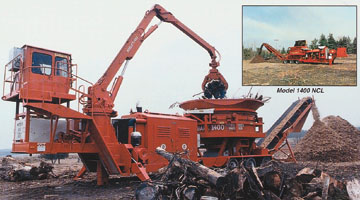
VIDEO: Tub Grinder - Model 2009 - DuraTech
Lesson 8: Waste Processing and Separation
Goals:
Read:
Assignments:
Separation at source (manual)
- Curbside (most successful)
- @3500 opoerations nation wide
- 40% mandatory
- Drop-off centers - ‘igloos’
- Cans, glass, plastics, newsprint
- Low participations
- Non-recyclables often discarded to avoid diposal costs
- Buy back centers (bottle bills, ADF)
- 90% of containers recycled in bottle bill states
- Bottle bill effect on curbside?
Separation at a materials recovery facility (MRF)
Clean MRF - Processing of separated materials (baling, crushing, etc.)
Dirty MRF - Separation of commingled MSW
*Both improve the quality of the recovered material (cleaning, separation of glass/plastics, contam removal, densification)
Size reduction
Tub Grinders

VIDEO: Tub Grinder - Model 2009 - DuraTech
| Horizontal Grinders |
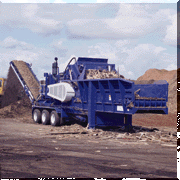
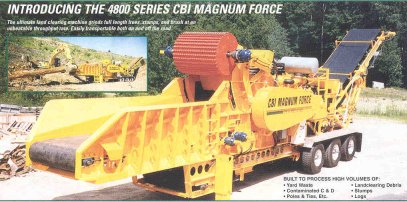 |
Size Separation
| Rotary Trommel Screens |
|
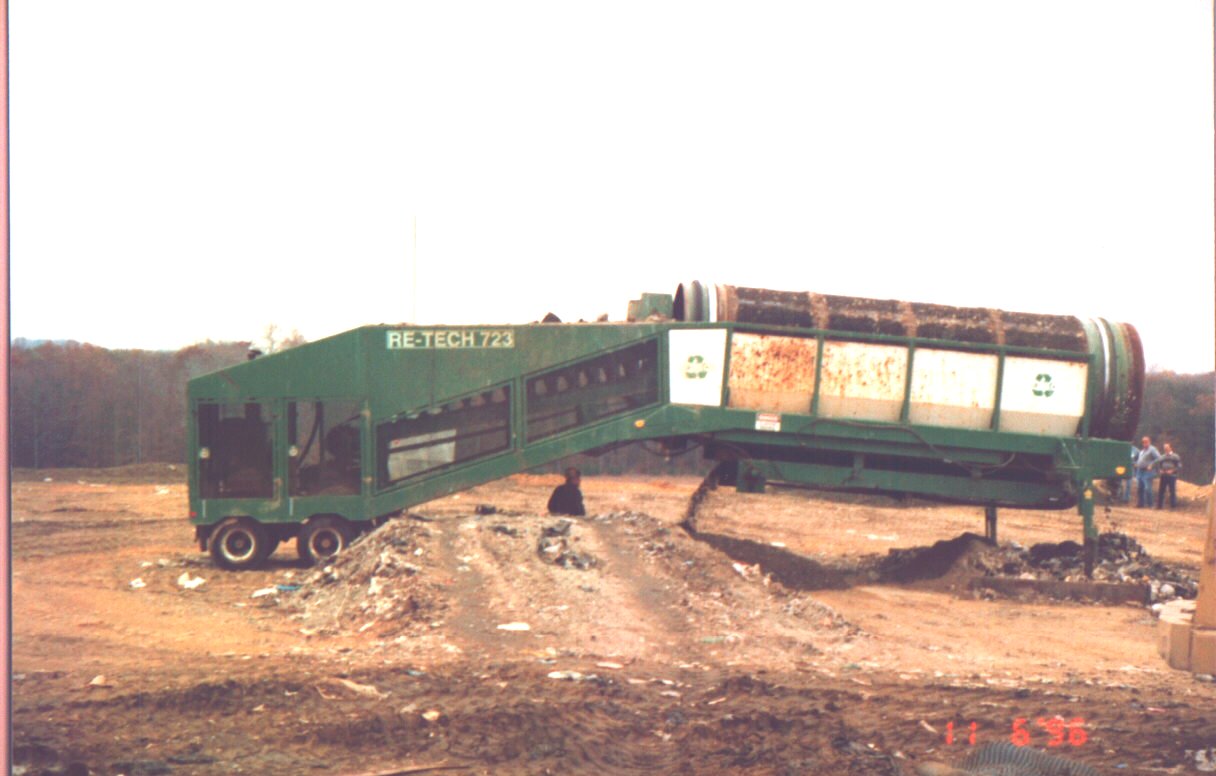 |
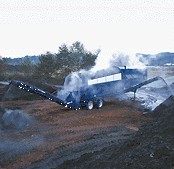 |
Mechanical Separation Techniques for Specific Materials
Ferrous metal - magnetism (most successful and efficient unit process)
Glass - froth flotation, optical separation tried in ‘70s but not efficient
Non-ferrous metals - flotation, electromagnetic eddy current, electrostatic separation tried, concentration and efficiency low
Plastics - no mechanical separation device in US source separation or hand picking, proprietary means used in Europe
Refuse Derived Fuel (RDF):